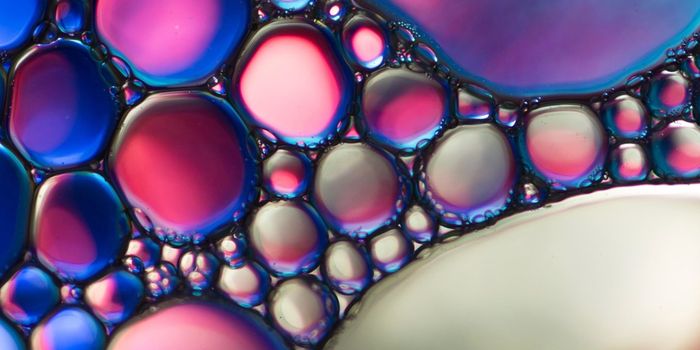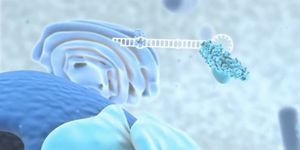Bacterial Hydrogel Shows Promise as a Healer of Gut Wounds
When we get a cut, we easily put a bandage on it and it heals, but internal wounds can be much harder to treat. Some surfaces, like those in the gut, are also covered with a layer of mucus that can hinder conventional treatments by preventing them from attaching. Researchers have now developed a probiotic hydrogel; bacterial cultures can generate mucoadhesive nanofibers that are self-regenerating and can be applied with syringes, sprays or endoscopic methods. The work has been reported in Advanced Materials.
“This new type of engineered living material with its ease of production and storability, biocompatibility, and mucoadhesive properties could be a door-opener for bioactive wound healing strategies for use inside the human gut lumen,” said study co-author Neel Joshi, Ph.D., a Core Faculty member at Harvard’s Wyss Institute for Biologically Inspired Engineering and John A. Paulson School of Engineering and Applied Sciences (SEAS).
“We can essentially program the normal nanofiber-producing molecular machinery of non-pathogenic E. coli to produce hydrogels that have a viscosity strongly resembling that of mucus, and with mucoadhesive capabilities built into them; and their modularity could allow us to tune them to match specific sections of the gastrointestinal tract with their individual mucus compositions and structures.”
A well-known microbe that is commonly used in the research lab, Escherichia coli (E.coli), is known to produce nanofibers that form biofilms that can be used to generate pharmaceuticals or chemicals after engineering a protein that the microbes release called CsgA. These proteins self-assemble into 'curli' nanofibers. This is the first time CsgA has been engineered for use as a therapeutic.
“Naturally produced biofilms are known to hinder wound healing processes up to a point where they need to be actively managed by health care practitioners. We have essentially hacked one of the core machineries that produces them with the long-term goal to do exactly the opposite, to produce materials that could support wound healing in an environment that is inaccessible by other materials,” explained the study first author and postdoctoral researcher Anna Duraj-Thatte, Ph.D.
Cells that produce mucus also release human trefoil factors (TFFs) that can help protect cells and fix injuries. A non-pathogenic strain of E.coli was programmed by the researchers to make a CsgA curli protein variant that's attached to a portion of TFFs. The resulting hydrogel can be easily separated from the bacteria by filtration, and the bacteria can be destroyed with a chemical treatment. “We think that the presence of the TFF domains enable different curli fibers to crosslink to each other and form a water-storing mesh, and demonstrated that the exact hydrogel properties depend on the type of TFF used,” said Duraj-Thatte.
The research team tested various hydrogels with different TFFs, and found that simple modifications could make it attach preferentially to different surfaces.
“Since hydrogels with different TFF domains can be easily sprayed onto tissue surfaces with controllable adhesion and functional activity, we envision their potential use in endoscopic procedures to treat intestinal disorders, like a spray-on bandage,” said study co-author Jeffrey Karp, Ph.D., a Professor of Medicine at Brigham and Women's Hospital.
Sources: Wyss Institute, Advanced Materials








